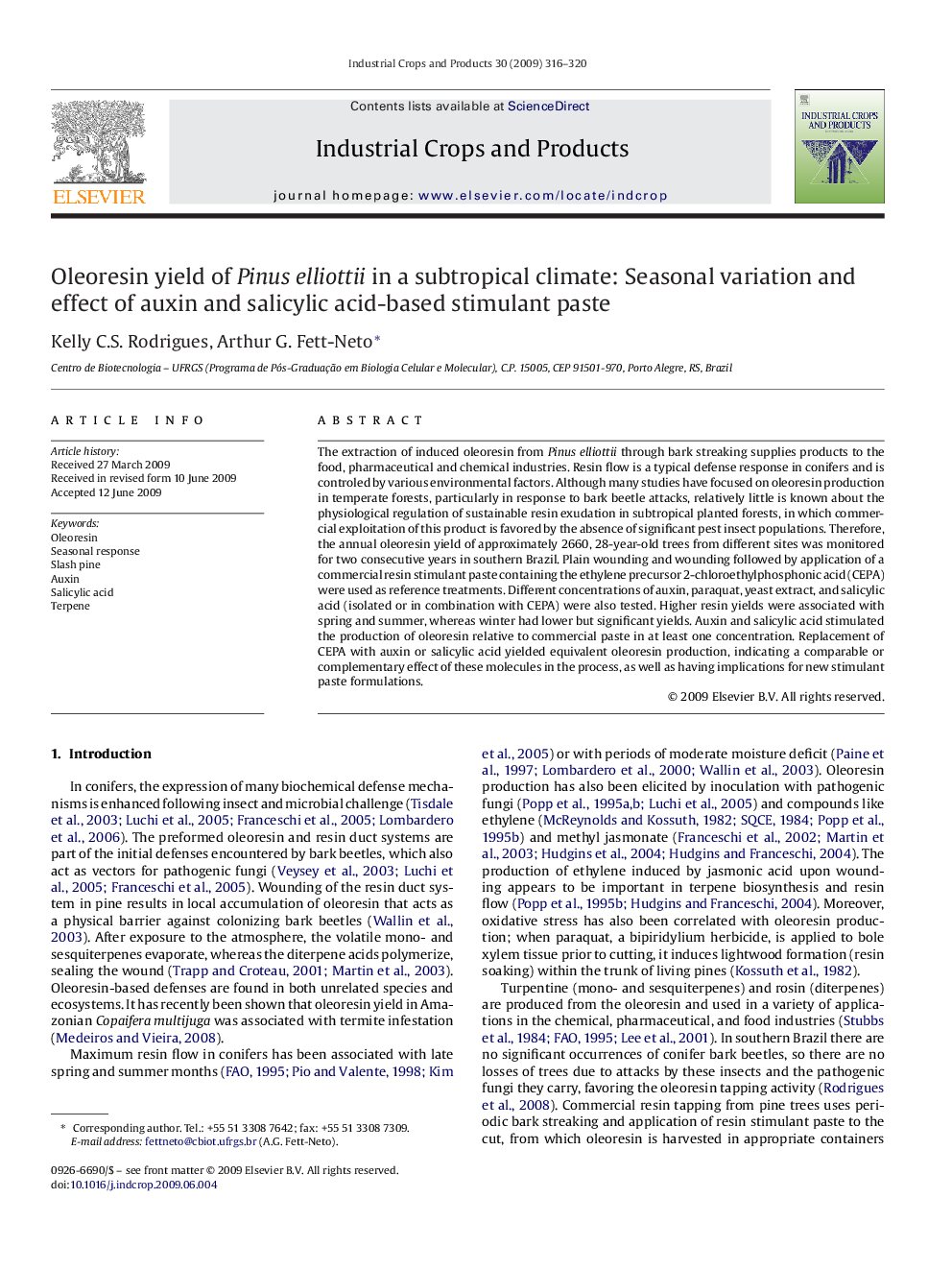| Article ID | Journal | Published Year | Pages | File Type |
|---|---|---|---|---|
| 4515036 | Industrial Crops and Products | 2009 | 5 Pages |
The extraction of induced oleoresin from Pinus elliottii through bark streaking supplies products to the food, pharmaceutical and chemical industries. Resin flow is a typical defense response in conifers and is controled by various environmental factors. Although many studies have focused on oleoresin production in temperate forests, particularly in response to bark beetle attacks, relatively little is known about the physiological regulation of sustainable resin exudation in subtropical planted forests, in which commercial exploitation of this product is favored by the absence of significant pest insect populations. Therefore, the annual oleoresin yield of approximately 2660, 28-year-old trees from different sites was monitored for two consecutive years in southern Brazil. Plain wounding and wounding followed by application of a commercial resin stimulant paste containing the ethylene precursor 2-chloroethylphosphonic acid (CEPA) were used as reference treatments. Different concentrations of auxin, paraquat, yeast extract, and salicylic acid (isolated or in combination with CEPA) were also tested. Higher resin yields were associated with spring and summer, whereas winter had lower but significant yields. Auxin and salicylic acid stimulated the production of oleoresin relative to commercial paste in at least one concentration. Replacement of CEPA with auxin or salicylic acid yielded equivalent oleoresin production, indicating a comparable or complementary effect of these molecules in the process, as well as having implications for new stimulant paste formulations.
